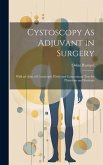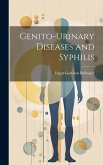"Rules and Directions for the Employment of Injections in Various Diseases" by Thomas Lewis offers a fascinating glimpse into the history of medical treatment. This meticulously prepared republication explores the practices surrounding injections, irrigation, and surgery, specifically within the field of urology. Delving into the methods employed in the treatment of various diseases, Lewis provides rules and directions that shed light on historical medical procedures. A valuable resource for those interested in the evolution of medicine, this work offers a unique perspective on surgical techniques and the use of injections. Explore the historical context of urological treatments and gain insight into the development of medical practices. This historical text provides a detailed look at irrigation methods and surgical interventions of its time. This work has been selected by scholars as being culturally important, and is part of the knowledge base of civilization as we know it. This work is in the public domain in the United States of America, and possibly other nations. Within the United States, you may freely copy and distribute this work, as no entity (individual or corporate) has a copyright on the body of the work. Scholars believe, and we concur, that this work is important enough to be preserved, reproduced, and made generally available to the public. We appreciate your support of the preservation process, and thank you for being an important part of keeping this knowledge alive and relevant.
Bitte wählen Sie Ihr Anliegen aus.
Rechnungen
Retourenschein anfordern
Bestellstatus
Storno



![The Diagnosis and Treatment of HÃ]morrhoids, With General Rules As to the Examination of Rectal Diseases The Diagnosis and Treatment of HÃ]morrhoids, With General Rules As to the Examination of Rectal Diseases](https://bilder.buecher.de/produkte/74/74720/74720734m.jpg)





